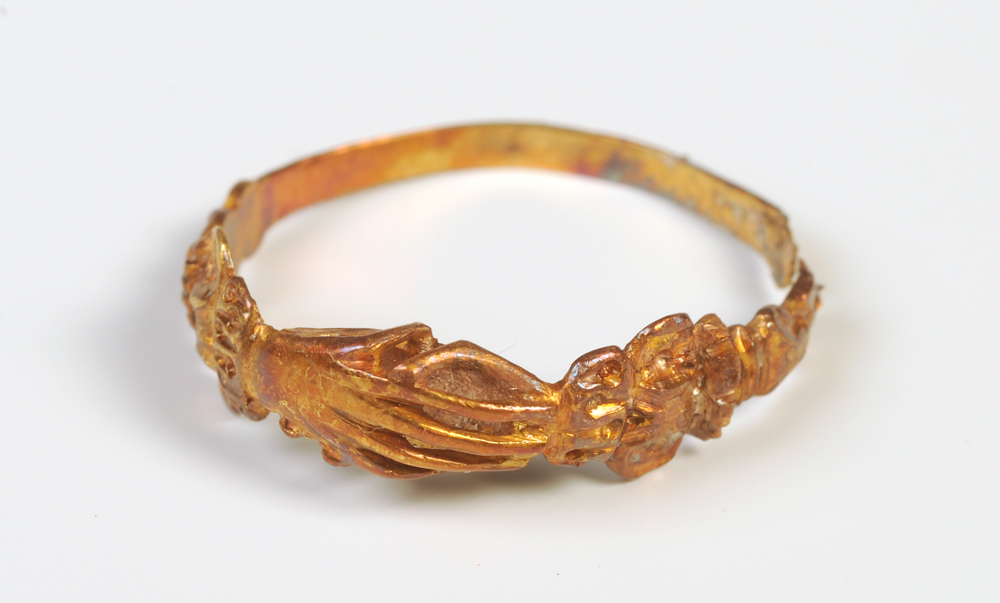Built and launched in 1609, probably in the Suffolk town of Aldeburgh on the North Sea coast, the Sea Venture was a 17th-century armed, wooden-hulled sailing ship custom-designed to carry both cargo (supplies for the Jamestown colony in Virginia) and emigrants to the New World. The hold was furnished for passengers. She was the flagship of the London Company, which had established Jamestown in 1607. The purpose-built vessel was the first single-timbered merchantman cargo carrier built in England. (It could be single- rather than double-timbered because the Sea Venture’s guns were placed on her main deck rather than below deck as on most ships).
On her maiden voyage, under the command of Knight Admiral, Sir George Somers, as well as Captain Christopher Newport on board, the Sea Venture set sail from Plymouth on June 2, 1609 along with a fleet of six other ships headed for Jamestown. As many as 600 crew and settlers were on board the fleet, including 150 on the flagship. Faced with high seas and hurricane-force winds, the Sea Venture became separated from the rest of the fleet just as the ship started taking on water. Why? It is thought that the storm eroded the caulking between the ship’s new timbers because they were not yet fully set. With the water in the hold topping nine feet (despite continuous bailing), the crew began to pray expecting the worst but the ship held together and on July 28, 1609, Bermuda was spotted and Sir George, hoping to prevent the boat from sinking, expertly guided the ship to the east of the island away from the ring of deadly breakers, giving the order to deliberately ground the Sea Venture on the comparatively softer reef in Discovery Bay, half a mile off St. Catherine’s Point. (Note: The islands became known as Somers Isles before they settled on “Bermuda”.)
All 150 people aboard the flagship left her safely and went ashore, where they stayed for more than nine months. They set up a small settlement and built two ships, the Deliverance and the Patience, to finish their journey and rejoin their sister ships in the settlement of Virginia through Jamestown. In the time that the new ships were built from the salvaged remains of the Sea Venture, and with the abundant and excellent Bermuda cedar, the crew and colonists built up an impressive store of food from the islands.
Filled with stores of turtles, birds and other food harvested in Bermuda, the Deliverance and the Patience set sail May 10, 1610, arriving on the coast of Virginia 10 days later to find the straggling remains of the Jamestown colonists. Suffering from starvation, ill health and deep despair, they were literally fleeing their failed settlement at Jamestown. They were intercepted by the Bermuda ships in the Chesapeake on their way back to England.
With their ships flush with stores from Bermuda and full of men and women of sound health and mind, the Bermuda ships convinced the beleaguered Jamestown settlers to reestablish the settlement – making it one of the important hubs for early settlement of the Americas.
While their shipmates unknowingly sailed off to rescue Jamestown, thus ensuring England’s future role in North America, a few passengers from the Sea Venture decided to stay permanently on the island effectively deciding the future of Bermuda as an English territory.
CURRENT CONDITION
Two guns were salvaged in 1612 and used in Bermuda’s first fortifications and the wreck’s location was well known until she slipped back into a sand hole and disappeared below the sand and was lost to history. The precise location was unknown until October 1958, when Edmund Downing found the site wedged into a coral reef in an area called Sea Venture Flats, just east of “the Narrows” – the eastern channel into Bermuda. In 1959 the, wreck was positively identified as the Sea Venture by Mendel Peterson, the father of marine archaeology from the Smithsonian, working with Teddy Tucker and Edmund Downing. The announcement was made in time for the 350th anniversary of the wreck but the designation was later contested by historians from the Tower of London in England who misattributed the origins of a cannon they had seen in a photograph and interest in the wreck waned until she was rediscovered by Russell Whayman in 1978. The relocation of the site peaked the interest of the Wrecks Board and in particular professional diver Allan (Smokey) Wingood who, starting in 1981, led a team of local divers in an eight-year effort to map and excavate the remains of the ship archaeologically. In later years he formed the Sea Venture Trust, adding Dr. John Adams from the Mary Rose Trust, who mapped the timbers using the latest mathematical techniques which ultimately confirmed Downing’s and Tucker’s original hypothesis and vindicated Mendel’s attribution of the wreck as the Sea Venture. Today hundreds of fascinating artifacts found on the site are on display in the National Museum of Bermuda.
No Diving - Restricted Site
















